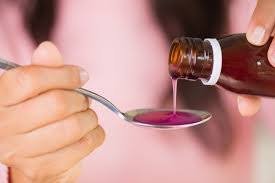Sweetening Agents used in Oral Pharmaceutical Suspensions

Sweetening Agents Used in Oral Pharmaceutical Suspensions
Sweetening agents are added to oral suspensions to mask unpleasant tastes of active pharmaceutical ingredients (APIs) and enhance patient compliance, especially in pediatric and geriatric formulations. They can be natural or artificial.
1. Natural Sweeteners
-
Sucrose
-
Most widely used sweetener.
-
Provides bulk and viscosity.
-
Concentration: 60–70% (also acts as preservative).
-
-
Glucose (Dextrose)
-
Less sweet than sucrose.
-
Often used in combination with other sweeteners.
-
-
Fructose
-
Sweeter than sucrose.
-
Used in diabetic-friendly formulations in limited amounts.
-
-
Sorbitol
-
Provides sweetness and viscosity.
-
Non-cariogenic, suitable for diabetic patients.
-
-
Mannitol
-
Cooling effect on oral cavity.
-
Used for low-calorie suspensions.
-
-
Xylitol
-
Non-cariogenic, similar sweetness to sucrose.
-
2. Artificial (Synthetic) Sweeteners
-
Saccharin & Saccharin Sodium
-
About 300–500 times sweeter than sucrose.
-
Used in low concentration to avoid bitter aftertaste.
-
-
Aspartame
-
About 200 times sweeter than sucrose.
-
Not heat stable (limited use in sterilized suspensions).
-
-
Acesulfame Potassium (Acesulfame-K)
-
200 times sweeter than sucrose.
-
Stable over wide pH and temperature ranges.
-
-
Sucralose
-
600 times sweeter than sucrose.
-
Heat-stable, suitable for pediatric suspensions.
-
Selection Criteria for Sweeteners
-
Palatability and taste profile.
-
Compatibility with drug and excipients.
-
Caloric value (important in diabetic formulations).
-
Stability (pH, heat, microbial resistance).
-
Regulatory and safety considerations.
✅ In summary: Sweetening agents in oral suspensions range from bulk sweeteners (sucrose, sorbitol) to high-intensity artificial sweeteners (aspartame, sucralose), selected based on patient type, formulation requirements, and stability considerations.
🎓 Discover one of the best Complete Pharmaceutical Production Course available —click below to explore the course that’s shaping future Production Course skills.

